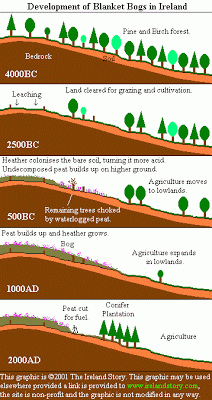The Four Spirits That Became Santa Claus
or the Secret Ingredients Of Coca Cola
Today, many of us think of Santa Claus and Father Christmas as being the same. Who knew they were two different people?
The name Santa Claus, or "Santa" seems to have come to us from the USA. It was a very rare term when I was a child, but most children today eagerly await the arrival of "Santa".
The name Santa came to the USA through Dutch settlers who told stories about Sinter Klass, the Dutch name for St Nicholas. Of course, these stories included how he gave presents to girls and boys.
The real St Nicholas was Bishop of Myra, in Turkey in the 3rd century AD. It is said he traveled in burgundy red coloured bishop's robes and give gifts to the poor. He was believed to have been particularly kind to children. He is said to have done this with the most secrecy he could as he was very shy. A legend these Dutch settlers told was that he was too shy to knock at the door to give gifts so he climbed a roof to drop coins down a chimney and they ended in a girl's stocking that was hanging over the fire to dry.
What about Father Christmas?
From ancient times he was a person who only appeared at midwinter wearing a cloak of holly, a belt of Ivy and gifts of mistletoe to lift people's spirits and enhance fertility. I do not recommend experimenting with mistletoe at home, though.
When the Saxon culture swept across Britain and also influenced Ireland, the Saxon teachers integrated their Father Time tradition with Father Christmas, or to be more correct, Father Winter. The Saxon tradition was for this midwinter visitor to be welcomed into homes, be sat near the fire and be given something to eat and drink. The food would have been an origin of our mince pies today and the drink was surely mulled wine which was brought to these lands by the Saxons.
By being kind to Father Winter it is thought that blessings would be brought into the household. It is also likely that King Winter was often an arrival just before the Mummers players. If he was blessed with food and drink then the Mummers would arrive to perform and bless the house.
Then the Vikings turned up a few hundred years later bringing their Jultid tradition. Jultid is said to have been the great spirit Odin who came to earth from 12 days from midwinter day as a human called Jultid. He wore a blue cloak and a long white beard and it is said he gave gifts to the good and punishments to the bad. It was also said he could travel faster than light and be in several places as a human at the same time.
When the Normans arrived with the St. Nicholas tradition, over time the celtic, Saxon, Viking and Norman traditions merged to provide the legend of Father Christmas, lately Santa Claus, that we have today. However, his tradition did go underground for several hundred years.
He Becomes The Captain
From about the 16th century it seems that the main role of Father Christmas had become Sir Christmas or Captain Christmas and his role was to commence the Christmas festivities in the drawing rooms of large houses and tower houses and then act as their co-ordinator. His role here was like an evolution of the hag or biddy who commenced the Mummer's plays and their rituals before they became mummers plays.
In 1644 when the Puritans banned Christmas, Father Christmas did go underground into secret village mummers play rituals and truly took over as the opening of these plays, away from the hags and biddys who had previously taken this charge. The opening line became "In Comes I Father Christmas or Captain Christmas". Where the ancient straw costume tradition was maintained the opening Christmas figure took on the feature of a big nose as a mockery of Cromwell.
When the Victorians revived and merged an assortment of Christmas traditions, mainly as a means of providing a market for printers, a Father Christmas like we have today was born. The Victorian Father Christmas merged elements of Celtic, Saxon, Viking, and Norman midwinter figures but his cloak colours changed with the preference of printers so he could be wearing red, blue, green or brown.
Coca Cola Decides That Santa Wears Red
In 1822 Clement C. Moore's wrote a poem called "The Night before Christmas", featuring Father Christmas in a red cloak. This inspired the Coca Cola Company to sell their drinks using figures of a bright red cloaked Father Christmas, who they decided to call Santa Claus.
Through Moore's poem, we also "learned" that Santa lives at the North Pole, keeps a list of good and bad children and reads letters sent to him from children
In the end it was the Coca Cola Company's advert of 1931 that standardized Father Christmas' coat as being bright red and launched his sustaining name of "Santa Claus".
Remember, Father Christmas is not Santa, he is much, much more than that.
He is much much more than inspiring us to drink more Coke!
I hope you will share reference with him in the way that he deserves
along with Mother Christmas too !!!


Comments
Post a Comment